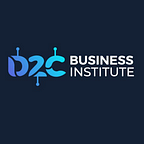What is D2C? A brief history.
Direct to Consumer is not a new business model. Its first vehicle of success was the mail order catalog. The first pre-internet way for manufacturers to reach out directly to the mass-market consumer without the use of a middle man. Hammacher Schlemmer sent their first mail order catalog out in 1881, and yes, the practice continues to this day. But the process was (and still is) tedious, full of friction, and slow. Beyond niche products worth waiting for and not worth stocking in every store, it was for a long time, much more convenient to just go to the damn store for everything else.
So market power shifted to the gatekeepers of the shopping aisle (ahem store owners and parent companies) who controlled what and whose product was on the shelves. It was the most important 2 minutes of a brand's life to pitch the store buyer on buying their goods and came with a long list of concessions to do so. The CPG industry became a cut-throat razor-thin margin business because of it. Furthermore, the manufacturer would sell their product to the customer (a store) and forfeit the ability to understand who their consumer (the shopper) was. If the store dropped the brand for another, the first brand was in a word: screwed. If you could envision a scale holding the market power between a consumer, a store, and a brand. The scale would be overwhelmingly tipped towards the store who chose what options a consumer would see, and what brands would be funded.
Fast forward to about the 2010s. The internet had matured enough to be a stable user experience, people trusted given their credit cards to it, and logistics and transportation became as cheap (and fast) as the trade-off of spending your time fighting the crowds to get to the store. And for the first time: the concept of the mail order catalog (now known as the internet) could provide goods and services not just for the esoteric, but basically for everyone and everything.
For the first time, a brand could design a purchase or post-purchase experience that a buyer would find so novel they would share with their friends… “gee you won’t believe it, this mattress came in a box!” or “they sent me 5 pairs of glasses and I just have to send back the one’s I don't like.” And those same brands got access to their customer data. And with that could test new products, retarget others, and create relationships directly with the customer. If you could imagine a scale of market power again, it would be shifting overwhelmingly from the storefront to the brand.
Since those early days of the modern D2C internet business, there have been thousands of success stories, and continue to be so. But the market power has shifted yet again. Stores, still being a major gatekeeper of our consumer attention and dollars, have gotten wise to the immense amount of data they hold on the consumer to improve and refine their in-store shopping experiences (with things like private label). And platforms like Amazon and Walmart, where participating is essential for many brands to remain relevant, add complexity and risk to brands seeking to retain their D2C powers.
Unless a brand is novel enough to create an experience online direct to consumer (that is also not easily replicable), most brands will have to adopt a sort of hybrid Direct-to-consumer AND business-to-business (selling to stores, and on Amazon, while growing their own list of customers) approach to ensure their vitality and success in the future. And this isn't always easy considering the ruthless tactics of platforms like Amazon. But it is possible, though complex. The right brand that thrives in the future markets will understand this, and be able to play to both sides. Regardless, the direct-to-consumer business is one that is here to stay.
